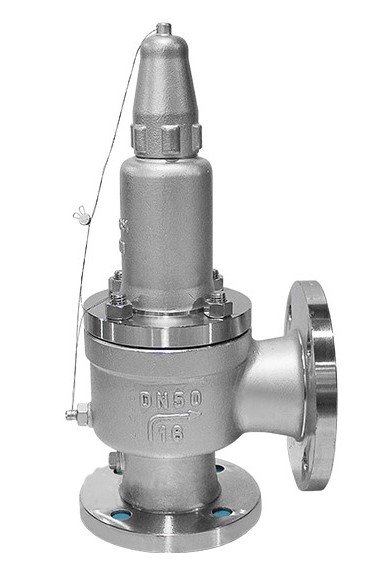Table of Contents
Table of Contents
| Pressure Release Valve [ |
|---|
| 1] |
|---|
What are Relief Valves?
A relief valve is a type of safety valve designed to open at a preset pressure, and discharge fluid until pressure drops to acceptable levels [12]. The valve's release of elevated liquid, gas, or steam pressures acts to prevent damage to the system.
Components of a Relief Valve
Relief valves are comprised of three main elements:, a valve, sensing and reference force element.
Valve element
- typicallyPressure relief valves often use a spring loaded poppet valve as the valve element [
12].
Sensing element
- typically a diaphragm or piston [1]Piston style designs are often used when higher relief pressures are required [2].
Reference force element
-commonly a spring [
12]
| Generic Pressure Release Valve Diagram [ |
|---|
| 3] |
|---|
Types of Relief Valves
Conventional Spring Loaded
With a conventional spring loaded relief valvvalve, the bonnet, spring, and guide are exposed to the released fluids. If the bonnet is vented to the atmosphere, relief-system backpressure decreases the set pressure [5]. If the bonnet is vented internally to the outlet, relief-system backpressure back pressure increases the set pressure. The conventional spring-loaded valve is used in noncorrosive services and where backpressure application and in which back pressure is less than 10% of the set point . [5].
| Conventional Spring Loaded [4] |
|---|
| Advantages | Disadvantages |
|---|---|
|
|
Balanced Spring Loaded
The balanced spring-loaded valve incorporates a means to protect the bonnet, spring, and guide from the released fluids and minimizes the effects of backpressureback pressure. The disk area vented to the atmosphere is exactly equal to the disk area exposed to backpressureback pressure [5]. These valves can may be used in corrosive or dirty service and with variable backpressure. back pressure [5].
| Balanced Spring Loaded [4] |
|---|
| Advantages | Disadvantages |
|---|---|
|
|
Pilot Operated
The pilot-operated valve is combined with and controlled by an auxiliary pressure pilot [5]. The resistance force on the piston in the main valve is assisted by the process pressure through an orifice. The net seating force on the piston actually increases as the process pressure nears the set point. [5]
| Pilot Operated [4] |
|---|
| Advantages | Disadvantages |
|---|---|
|
|
|
|
Contributors:
| Contributors Summary | ||||
|---|---|---|---|---|
|
Faculty Advisor: Mary Robinson



